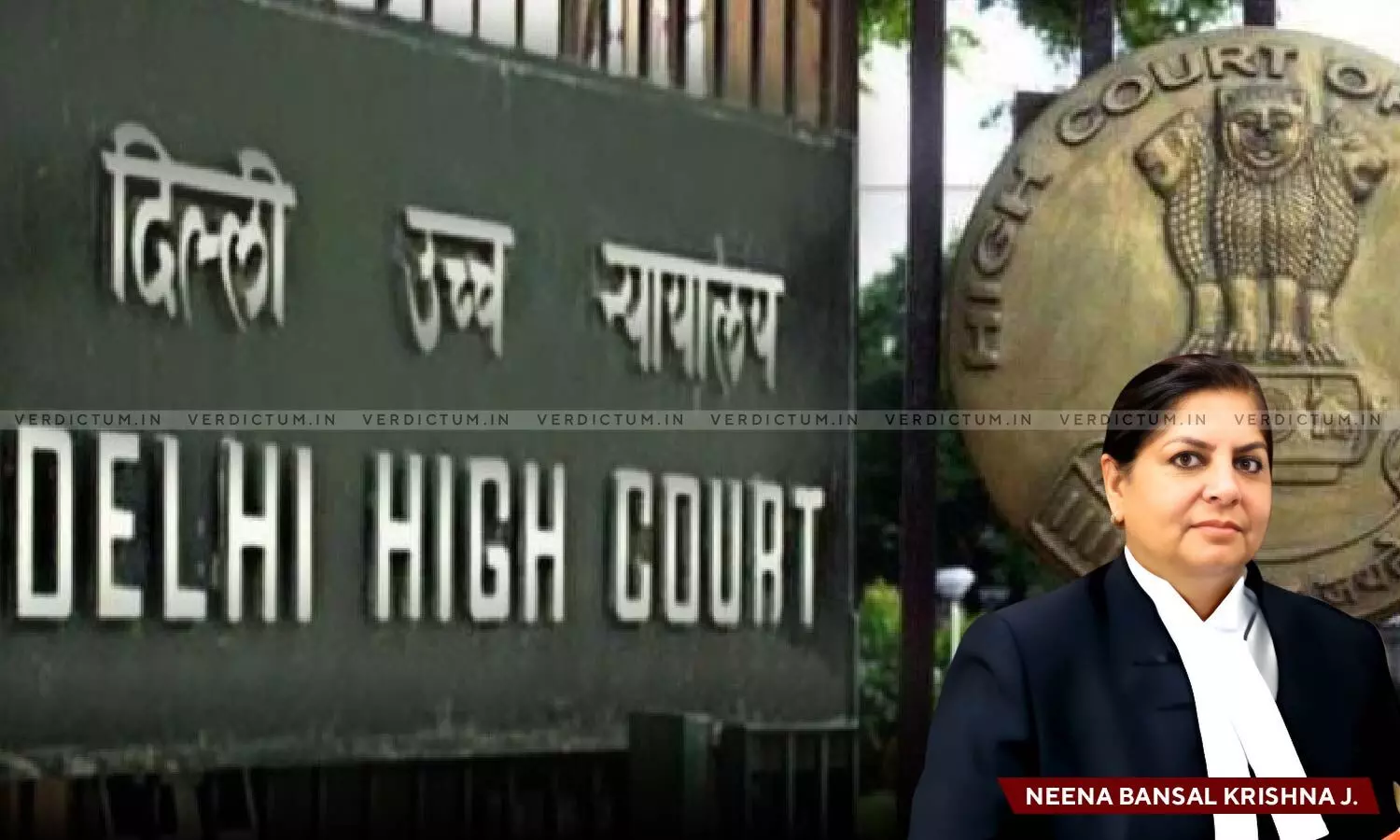
Intentional Infliction Of Injury: Delhi HC Convicts Two Men Accused Of Injuring A Person By Nail Cutter In 2006
 |
|The Delhi High Court has convicted two men who were accused of injuring a person with the help of nail cutter in the year 2006.
The State had filed a criminal appeal challenging the 2008 judgment by which the Trial Court acquitted the aforesaid men.
A Single Bench of Justice Neena Bansal Krishna observed, “… it has to be necessarily concluded that the prosecution has proved beyond reasonable doubt that the two respondents had intentionally inflicted injury on the head of the injured with an intent and knowledge that such injury could result in death. The offence under Section 308/34 of the IPC, has been proved beyond reasonable doubt, by the prosecution.”
APP Hemant Mehta appeared on behalf of the appellant/State while Advocate Kapil Singhal appeared on behalf of the respondents/accused.
In this case, as per the prosecution, the respondents (accused persons) went to the house of the complainant and called him outside after which they abused and threatened him and then hit him with a pointed/sharp instrument which resulted in a serious wound on his head. He started bleeding profusely and became unconscious. He was then taken to the hospital by his neighbour where he received 21 stitches on his head. Thereafter, on his complaint, an FIR under Sections 308 and 34 of the Indian Penal Code (IPC) was registered.
Subsequently, the respondents were arrested and they led the police for the recovery of the nail cutter from near the wall, close to the place of incident. The Additional Sessions Judge (ASJ) observed that the identity of the weapon of offence i.e., nail cutter was not established and the possibility of the same having been planted could not be ruled out. Thus, the story of the prosecution was not believed and the respondents were acquitted. Hence, their acquittal was challenged before the High Court.
The High Court in view of the facts and circumstances of the case noted, “The initial history was based on the first available information which was subsequently rectified on getting more information about the manner in which the injury was caused. It is settled law that not much significance can be attached to initial history recorded by the doctor especially when it is recorded on the basis of the information provided by the person who was not the eye witness. The manner in which the injury had been caused to the injured is fully proven by the prosecution.”
The Court further took note of the fact that the recovery of the weapon was made from an open public place after five days and that the scene of incident was near the barber shop.
“The recovery of the nail cutter from an open area; that too from near the barber shop after about five days of the incident, may not inspire confidence but the fact remains that the testimony of the complainant/injured about the injury having been inflicted by the respondents by using a pointed instrument, is unassailable and is duly corroborated by the MLC and the opinion of the doctor”, it said.
The Court also remarked that much has been emphasized on the manner of the recovery of the nail cutter and that the same has not been identified by the complainant.
“Insofar as, non-identification of the Nail cutter by the complainant is concerned, the complainant has been consistent in saying that the injuries were inflicted from behind, after which he became unconscious. Thus, it is quite comprehendible that he would not be in a position to identify the weapon as the attack was from behind. However, he has clarified that the injury had been inflicted by the accused Sandeep”, it added.
The Court observed that the accused used a sharp-edged weapon to attack the complainant, resulting in a deep wound on his head which required 21 stitches, though opined as Simple. It said that a person hitting a victim on his head with a sharp pointing weapon would do so with the knowledge and intention that such attack/injury on the head of the victim is likely to result into death of a person.
“The learned ASJ has fallen into the error in disbelieving the testimony of the injured and in observing that it was in contradiction with the testimony of PW-1 Kamal Singh”, it concluded.
Accordingly, the High Court set aside the impugned judgment, convicted the respondents, and listed the case for arguments on sentence on August 30, 2024.
Cause Title- State (G.N.C.T.) of Delhi v. Mohit Kumar & Anr. (Neutral Citation: 2024:DHC:6413)